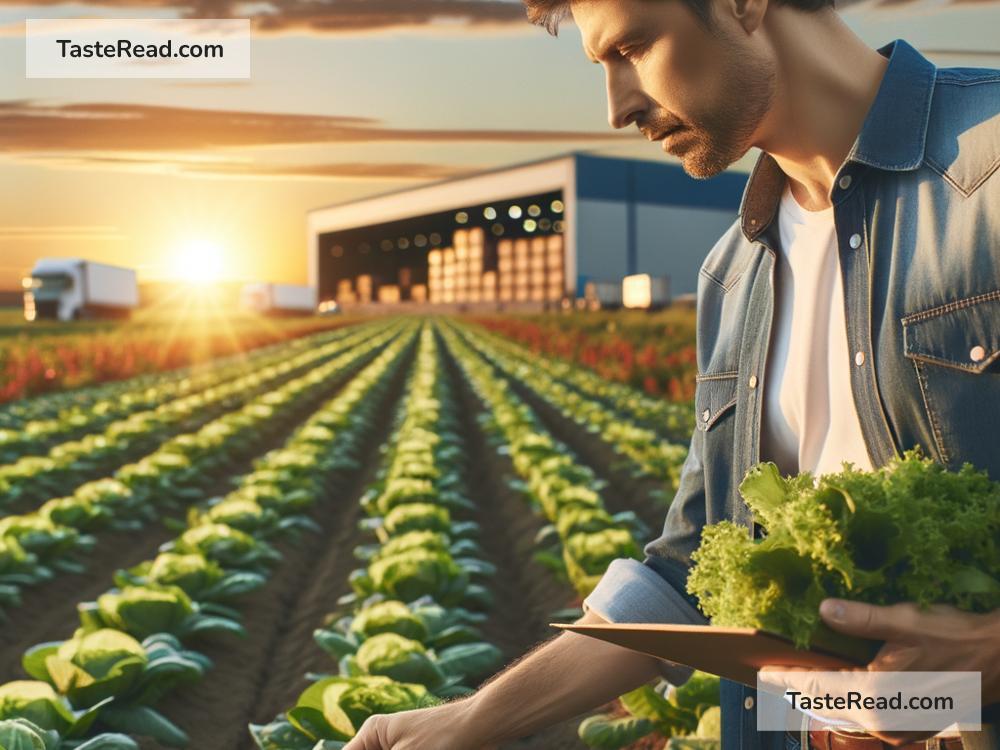Understanding the Impact of Food Supply Chains on Nutrition
Food is essential for life, and having access to nutritious food is key to staying healthy. But how does food get from the farm to your plate? This is where the food supply chain comes in. The food supply chain is the process of growing, processing, transporting, storing, and selling food. It plays a big role in the types of food available to us and affects the quality and nutrition of what we eat. In this blog, we will explore how food supply chains impact nutrition in simple terms.
What Is a Food Supply Chain?
Before diving into its impact on nutrition, let’s quickly understand what a food supply chain is. Imagine you’re eating an apple. That apple started its journey at a farm, where it grew on a tree. After being harvested, it was packed, transported to a store, and then purchased by you. The steps in this journey—from the farm to your plate—make up part of the food supply chain.
Every food item we eat goes through a similar process. Some foods are fresh and simple, like fruits and vegetables. Others, like canned soup or cookies, go through more complex processing steps before they reach stores. Whether food is fresh, processed, or packaged, the supply chain affects its availability and nutrition.
How the Food Supply Chain Impacts Nutrition
Here are some of the key ways in which food supply chains influence the nutrition of what we eat:
1. Access to Nutritious Food
The supply chain determines what types of food are available in different places. For example, in cities and towns where grocery stores are far away, people may have limited access to fresh fruits and vegetables. Instead, they might rely on processed foods that are easier to transport and store but less nutritious. This can lead to unhealthy diets and even health problems, like obesity or malnutrition.
In rural areas, especially in poorer regions, access to nutritious food can also be a challenge. If local farmers primarily grow crops to sell (like cotton or coffee) instead of food for eating, communities may lack variety in their diets and suffer from poor nutrition.
2. Food Quality
The quality of food is affected by every step in the supply chain. Fresh foods need to be handled carefully during transportation and storage to preserve their nutrients. For example, vegetables and fruits lose vitamins when they are exposed to heat or light. If they are stored poorly or travel long distances before reaching shelves, they may not be as nutritious.
Processing also impacts food quality. While processing can make food safer and extend its shelf life, it can reduce its nutrition. For example, refining grains like wheat strips away valuable nutrients such as fiber and vitamins.
3. Time and Transportation
Some foods take a long time to get from farms to supermarkets due to transportation and shipping. Fresh foods like leafy greens and berries can quickly lose nutrients if they’re not transported under the right conditions. That’s why eating locally sourced fruits and vegetables, which spend less time traveling, is often better for nutrition.
Long supply chains also rely on additives, such as preservatives, to keep food fresh. While preservatives help food last longer, they don’t add any nutritional value. In some cases, they may contribute to health conditions like high blood pressure when they include excess sodium.
4. Cost and Affordability
The cost of food is influenced by the supply chain, and this can affect what people buy. If nutritious foods like fresh fruits, vegetables, meat, or fish are expensive, people might opt for cheaper alternatives, such as instant noodles or processed snacks. Unfortunately, these low-cost foods often lack vitamins, minerals, and other nutrients.
Economic challenges and supply chain issues—like rising fuel prices or climate-related disruptions—may drive up the costs of healthy food. This is particularly concerning for low-income families, as it can lead to diets that are high in calories but low in nutrition.
Solutions to Improve Nutrition Through Better Supply Chains
While the food supply chain presents challenges, there are ways to improve it to ensure better nutrition for everyone:
-
Support Local Food Systems: Encouraging the production and purchase of local food helps shorten the supply chain. This reduces the risk of nutrient loss during shipping and makes fresh food more accessible.
-
Improve Storage and Transportation: Investing in better storage methods, such as refrigeration, can help preserve the nutritional value of food during long journeys.
-
Promote Affordable, Nutritious Food: Governments and organizations can work to make healthy food more affordable. For example, subsidies for fruits and vegetables can help lower costs and encourage healthier eating.
-
Education and Awareness: Teaching communities about the importance of nutrition and food choices can lead to smarter buying decisions. Knowing that processed snacks are less nutritious than fresh produce is a step toward healthier eating habits.
-
Invest in Sustainable Agriculture: Growing a wider variety of nutritious foods, reducing environmental harm, and ensuring fair trade practices can strengthen the overall food system and support better nutrition.
Conclusion
The food supply chain plays an important role in shaping the diet and health of communities around the world. While it provides access to food, it can also contribute to challenges like poor nutrition when fresh food stalls, processing removes nutrients, or costs make healthy eating unaffordable. By addressing these challenges and improving the supply chain, we can create a world where nutritious food is available and affordable for everyone.
Whether you’re a farmer, a business owner, or just someone who loves a good meal, the choices we make in producing, distributing, and consuming food can help build healthier lives and communities.


